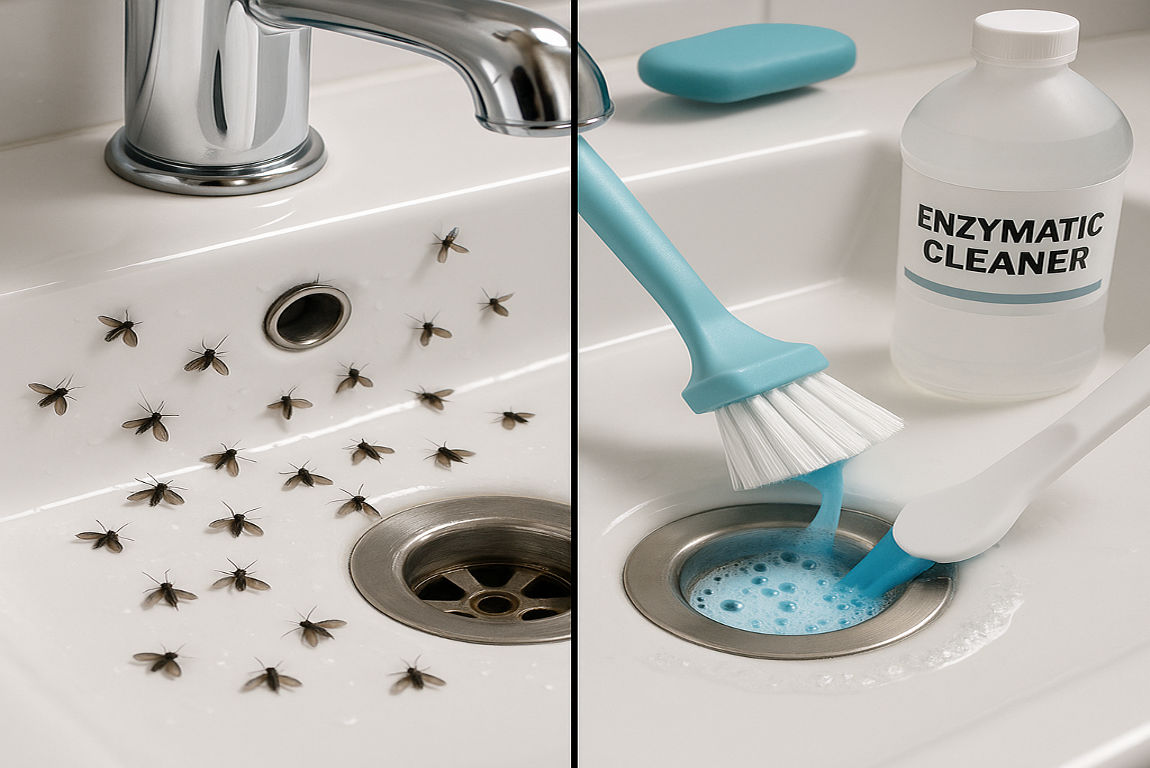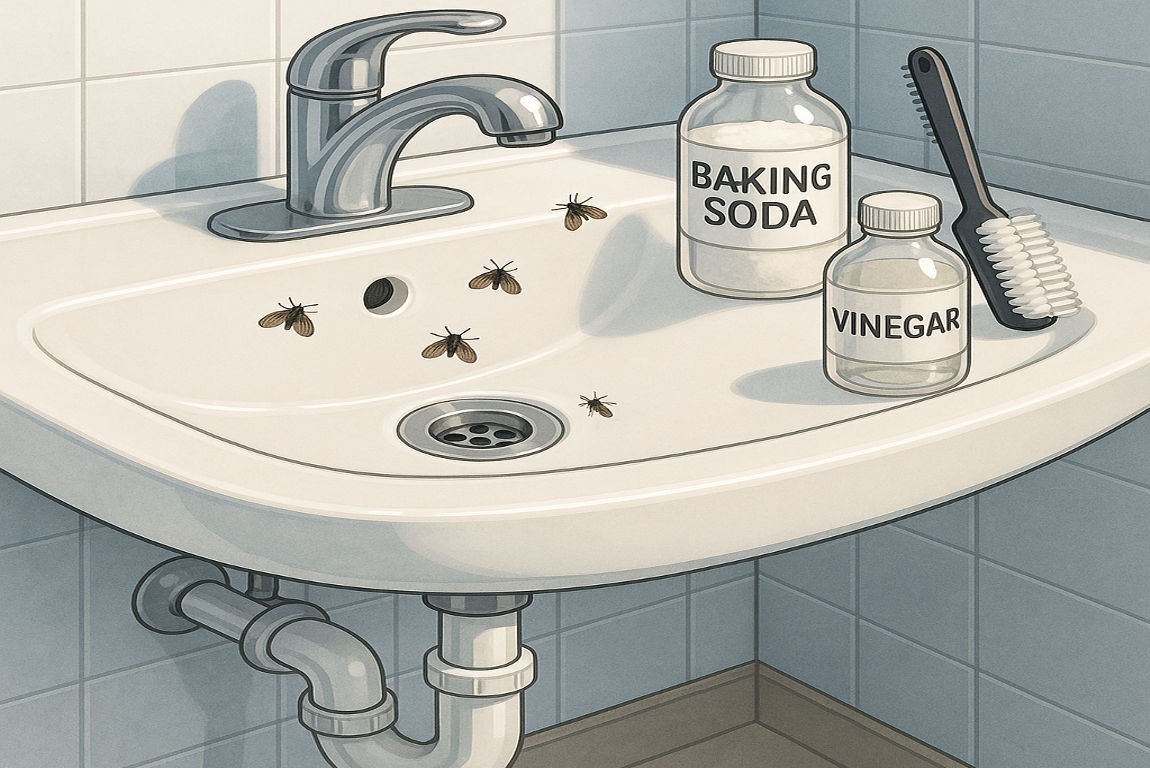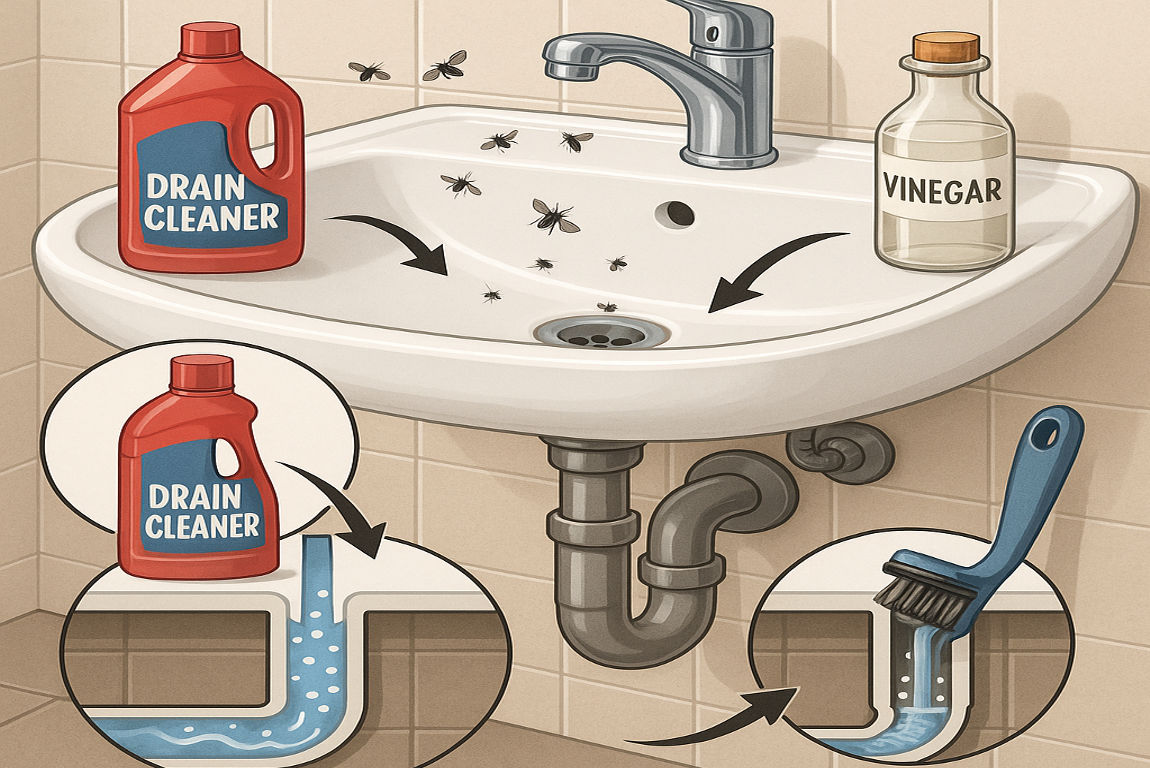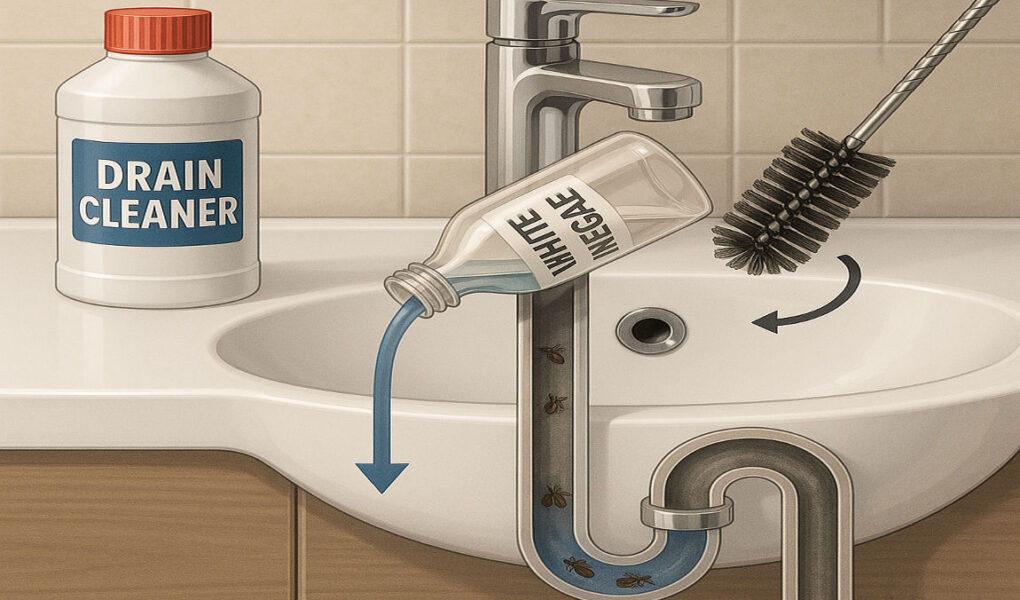Have you ever noticed tiny, pesky flies buzzing around your sink or shower drains? These small intruders, known as drain flies, can quickly become an annoying problem if left unchecked. They thrive in moist environments, feeding on organic matter in your drains, and can multiply rapidly. While they may seem harmless at first, their presence can indicate underlying hygiene or plumbing issues in your home.
What Are Drain Flies?

Definition and Characteristics
Drain flies, also known as Psychodidae, are small, moth-like insects that are typically gray or black. They have fuzzy bodies and wings, giving them a distinctive appearance. These flies are often mistaken for fruit flies or gnats, but they are unique in their behavior and habitat.
- Size: Drain flies are tiny, usually measuring about 1/8 inch in length.
- Behavior: They are weak fliers and are often seen resting on walls near drains or damp areas.
- Lifespan: Their life cycle is short, lasting about 20 days, but they reproduce quickly, making infestations challenging to control.
Where Do They Come From?
Drain flies thrive in moist environments with stagnant water and organic debris. Common breeding grounds include:
- Kitchen sinks
- Bathroom drains
- Basement floor drains
- Shower or bathtub drains
- Leaky pipes or areas with standing water
These areas provide the perfect conditions for drain flies to lay their eggs, which hatch into larvae that feed on organic matter.
Why Are They a Problem?
While drain flies are not known to bite or transmit diseases directly, they can still pose problems:
- Nuisance: Their presence can be irritating, especially when they multiply.
- Hygiene Concerns: Drain flies breed in environments contaminated with bacteria, which can lead to health issues.
- Underlying Issues: Their presence often signals clogged or dirty drains, leaky pipes, or other plumbing problems.
You may also read (does the st jude dream house come furnished find out).
How to Identify a Drain Fly Infestation

Signs of an Infestation
If you suspect drain flies in your home, look for these telltale signs:
- Small Flies Near Drains: You may notice tiny flies hovering around sinks, showers, or other damp areas.
- Larvae in Drains: Drain fly larvae are small, worm-like creatures that can be seen in standing water or organic buildup in pipes.
- Resting Flies: Adult drain flies often rest on walls or surfaces near their breeding grounds.
The Tape Test
One of the easiest ways to confirm a drain fly infestation is by performing the tape test:
- Take a piece of clear tape and place it over the suspected drain, sticky side down.
- Leave it overnight.
- Check the tape in the morning for flies that may be stuck to the adhesive.
This simple test can help you pinpoint the source of the infestation.
Other Methods of Identification
- Observing Adult Flies: Look for Adult flies resting on walls or near drains.
- Checking for Larvae: Shine a flashlight into the drain to spot larvae wriggling in organic matter or standing water.
Causes of Drain Fly Infestations
Understanding what attracts drain flies is key to eliminating them. Here are the most common causes:
Moisture and Organic Matter
Drain flies are drawn to stagnant water and organic debris in drains. This includes soap scum, grease, hair, and food particles that accumulate over time.
Clogged or Dirty Drains
Clogged drains provide an ideal breeding ground for drain flies. The buildup of organic material in pipes serves as both a food source and a breeding ground for eggs.
Leaky Pipes or Fixtures
Leaks can create hidden moist areas where drain flies can thrive. These spots are often overlooked, making them a persistent source of infestation.
Seasonal Factors
Warm, humid weather can exacerbate drain fly infestations. They are more active during the summer months when conditions are ideal for breeding.
You may also read (how to safely remove house centipedes from your home).
How to Get Rid of Drain Flies in My House

Now that you’ve identified the problem, let’s explore practical ways to eliminate drain flies. Here’s a step-by-step guide:
Cleaning and Treating Drains
- Boiling Water Method
- Boil a pot of water and pour it down the affected drain.
- Repeat this process 2-3 times a day for several days to kill larvae and flush out organic matter.
- Baking Soda and Vinegar Solution
- Pour 1/2 cup of baking soda into the drain.
- Follow with 1/2 cup of vinegar.
- Let the mixture sit for 15-30 minutes, then flush with hot water. This natural solution helps break down organic buildup.
- Drain Cleaner Products
- Use enzyme-based cleaners to safely dissolve organic matter. These products are eco-friendly and effective.
- Avoid harsh chemical cleaners, as they can damage pipes and harm the environment.
Physical Removal Methods
- Drain Snake or Brush
- Insert a drain snake or brush into the pipe to physically remove debris and larvae.
- This method is beneficial for stubborn clogs.
- Vacuuming
- Use a wet/dry vacuum to suck out debris and larvae from the drain.
DIY Traps for Adult Flies
- Apple Cider Vinegar Trap
- Fill a bowl with apple cider vinegar and add a few drops of dish soap.
- Cover the bowl with plastic wrap and poke small holes in it.
- Place the trap near the infested area to catch adult flies.
- Sticky Tape Traps
- Place sticky tape near drains to capture adult flies.
Professional Help
If DIY methods fail, it may be time to call a professional exterminator. They can:
- Identify hidden breeding grounds.
- Use specialized treatments to eliminate infestations.
Preventing Future Drain Fly Infestations

Prevention is the best way to keep drain flies from returning. Here’s how:
Regular Drain Maintenance
- Routine Cleaning
- Use enzyme-based cleaners on a weekly basis to prevent organic buildup.
- Flushing Drains
- Pour boiling water down drains regularly to keep them clear.
Fixing Plumbing Issues
- Repair Leaks
- Check for and fix leaky pipes or fixtures to eliminate hidden moisture.
- Improve Drainage
- Ensure proper drainage to prevent water from standing.
Keeping the Home Dry
- Ventilation
- Use exhaust fans in bathrooms and kitchens to reduce humidity.
- Dehumidifiers
- Place dehumidifiers in areas prone to dampness, such as basements and bathrooms.
Sealing Entry Points
- Seal cracks and gaps around drains and pipes to prevent flies from entering.
You may also read (how to keep your house smelling fresh while vaping).




